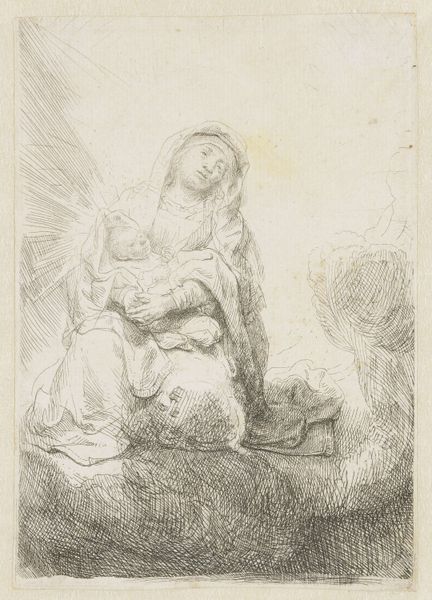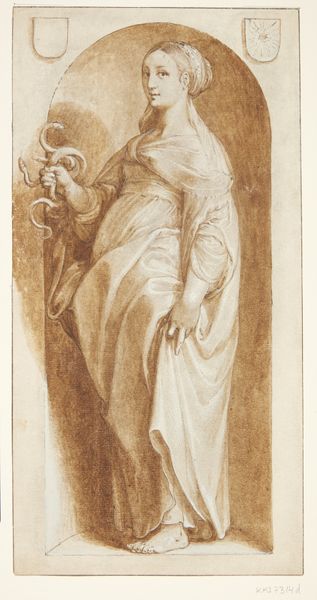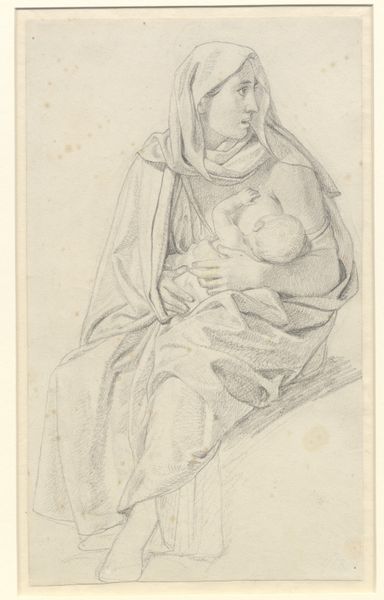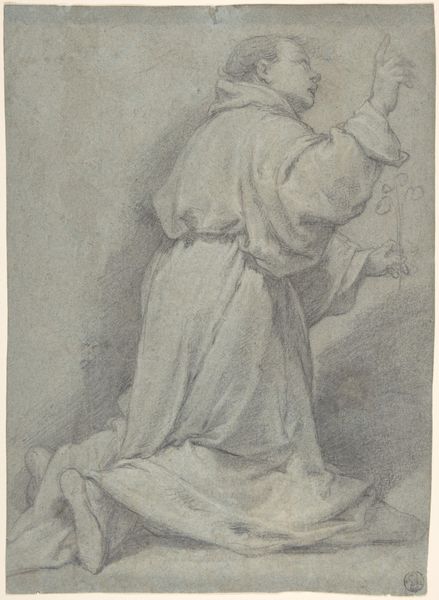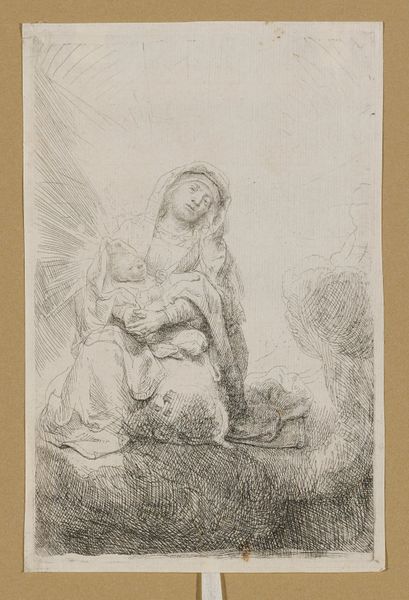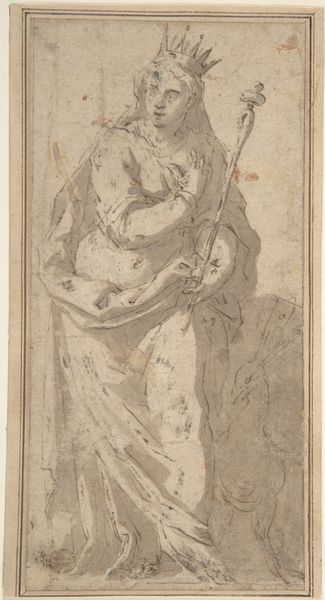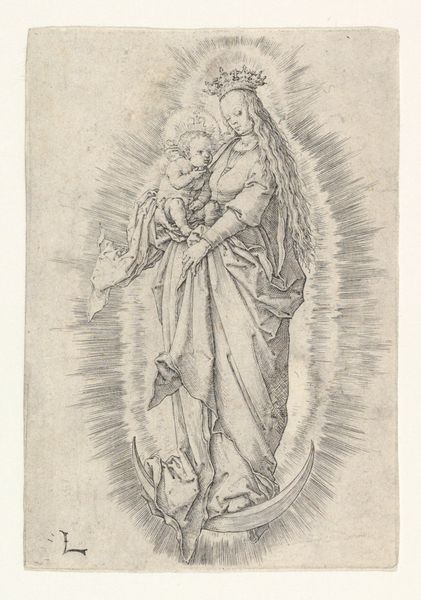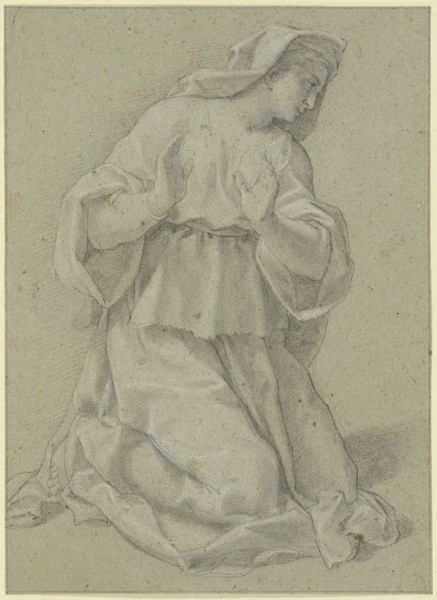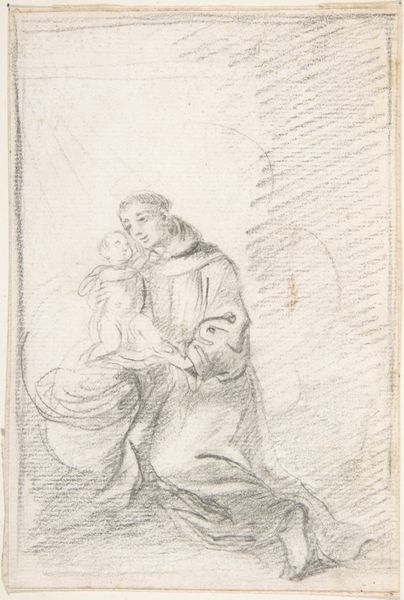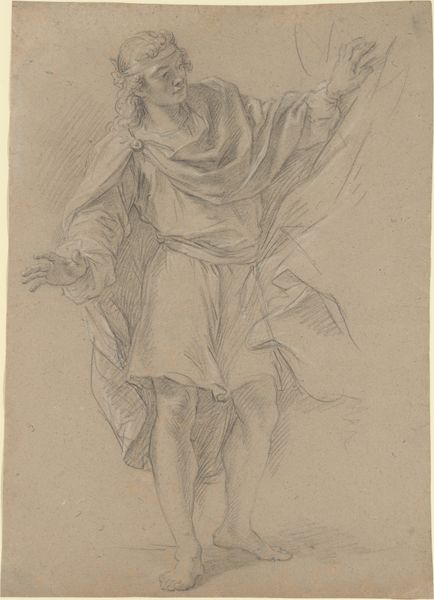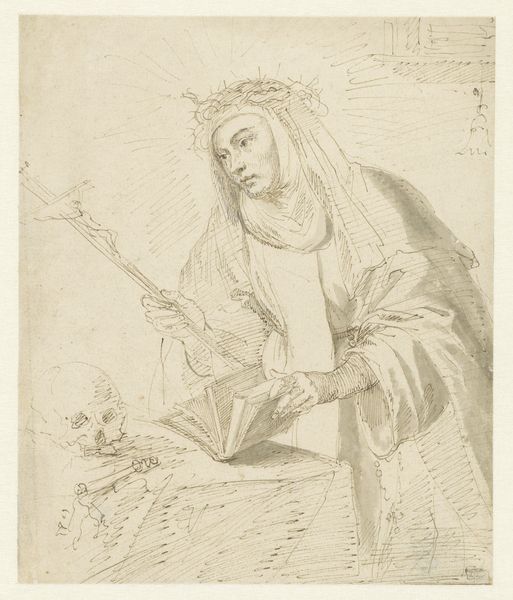
drawing, pencil
#
portrait
#
pencil drawn
#
drawing
#
baroque
#
figuration
#
pencil drawing
#
pencil
#
portrait drawing
#
academic-art
Dimensions: sheet: 38.6 × 27.2 cm (15 3/16 × 10 11/16 in.)
Copyright: National Gallery of Art: CC0 1.0
Curator: Luigi Garzi sketched this "Saint Catherine of Siena on a Cloud" using pencil sometime between 1696 and 1697. It’s an evocative drawing, wouldn't you say? Editor: Yes, there’s an immediate sense of ascension; the upward tilt of the figure's face and the loose sketch of the cloud work together beautifully to create a feeling of ethereality. Curator: Indeed. Garzi uses very economical strokes to build a strong composition that draws your eye upward. Note the deliberate use of light and shadow to model Saint Catherine’s robes. It adheres to Baroque artistic principles while maintaining a relatively sparse quality typical of preparatory sketches from that period. Editor: And the symbolism! Catherine of Siena, a mystic and Doctor of the Church, is often depicted with the stigmata. The crown of thorns she wears alludes to her visions and empathy with Christ’s suffering. She's frequently an emblem of devotion and spiritual ascent. Curator: Symbolism is key here. The outstretched hands invite a connection. Although drawn economically, the anatomical fidelity in the fingers indicates careful study and underpins a clear expressive intent, doesn't it? Editor: The visual language connects with familiar visual tropes—the saint as an intercessor, the cloud as a liminal space. I wonder what other meanings this work might have held at the time. This drawing makes me wonder how its viewers related to the imagery in the 17th century compared with today. The pose could either represent divine invocation or the pain of earthly struggle, possibly mirroring contemporary hopes and concerns. Curator: I am more concerned with how Garzi manipulates our visual experience within the aesthetic frame. Whether intentionally or otherwise, the loose and almost gestural strokes surrounding the form of Catherine set a contrasting scene in our reading of foreground and background. This allows the viewer to explore the form as something that emerges out of indistinctiveness, which I appreciate most. Editor: Ultimately, art provides a pathway between historical symbols and the viewer's experience. Understanding these meanings is central to bridging our historical reality with the artist's cultural context and legacy. Curator: Yes, it gives pause for reflection, to which careful formal analysis, along with attention to cultural history, are equal partners in deepening that connection.
Comments
No comments
Be the first to comment and join the conversation on the ultimate creative platform.
